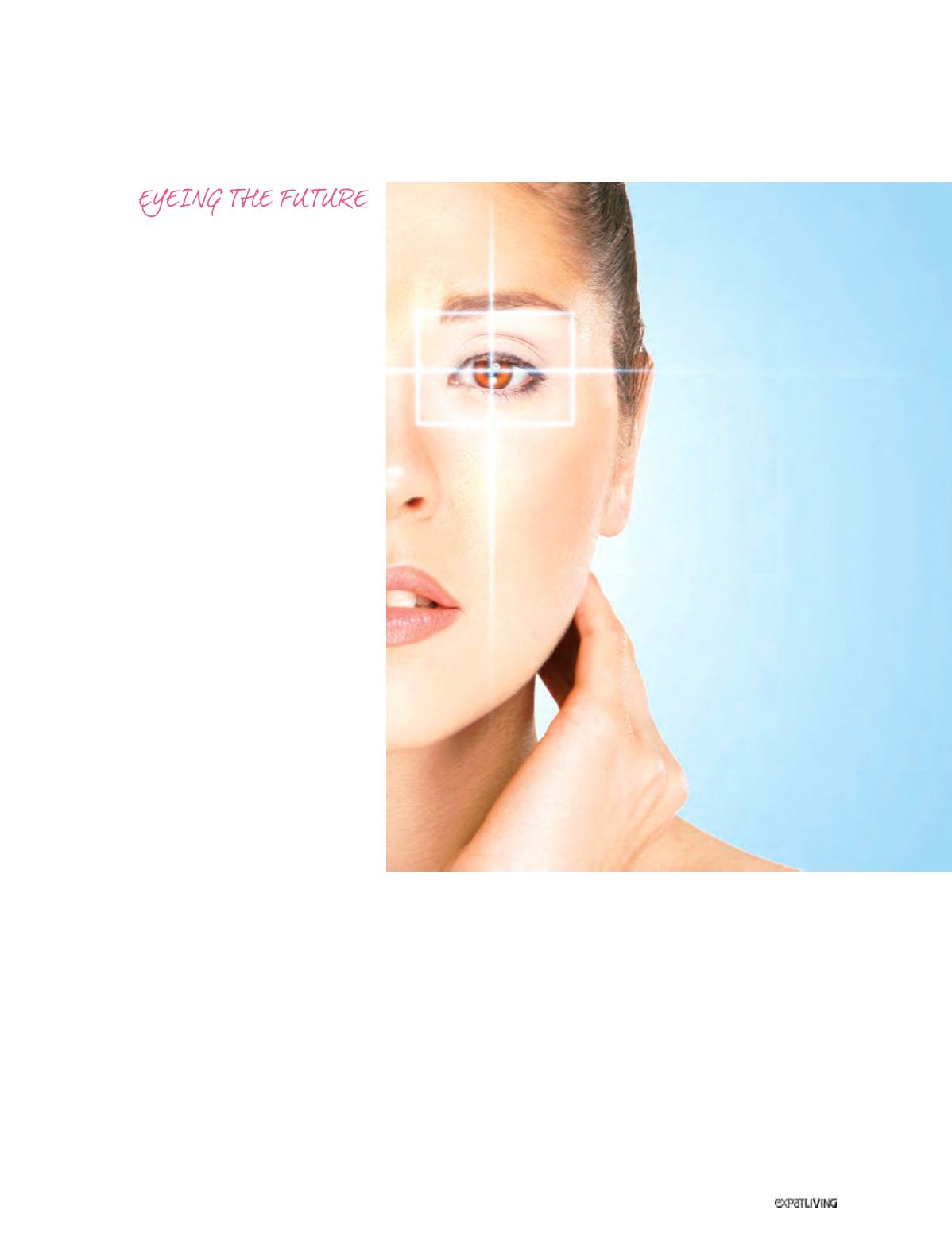

MEDICAL ADVANCES
315
June14
Eye surgery technology just keeps
getting better. Undergoing Lasik surgery
about five years ago is one of the best
things I ever did, and my Singaporean
surgeon used the most advanced
method available anywhere. One eye
was corrected for distance, and the
other for near vision. But when our
daughter Blaire did the same in Sweden
last year – just four years later – she
had the benefit of a newer, better and
even less risky technology called ReLEx
Smile. (That seems to be the current
standard here, too.)
Surgical vision correction has come a
long way, says eye surgeon DR ALICIA
HOW, who specialises in cataract and
comprehensive ophthalmology. Early
techniques involved reshaping the
cornea by means of radial keratotomy
(RK). Then came photorefractive
keratectomy (PRK), which did the same
job, but by means of a laser. Lens
implantation followed, and the next
evolutionary step is something called
corneal inlay surgery.
By restoring the proper curvature of
the cornea, Alicia explains,
corneal inlay
surgery
overcomes the presbyopia that
bedevils us in middle age. Designed to
allow you to see both far and near with
the same eye (unlike my procedure,
which corrected one eye for reading and
the other for distance vision), it could
mean saying goodbye forever to those
pesky reading glasses.
Another recent advance in treating
presbyopia, and also cataracts, is
trifocal lens implants
. Unlike bifocal
lens implants, which correct only near
vision (reading the paper) and distance
vision (reading the number on the
approaching bus), these also correct
intermediate vision – what you need to
read your computer monitor, your phone
or your iPad.
“With Lasik,” explains Alicia, “we can
correct for far and near, as in your case,
or for far and intermediate if that’s what
you want – but you’d have to hold your
newspaper at arm’s length in order to
read it!
“I’ve done a number of trifocal implant
surgeries, with good results. It gives
patients the option to be spectacle-
free, but I wouldn’t say the technology
has been perfected yet: there are still a
couple of compromises such as glare,
haloes and contrast sensitivity.
“Also, it’s not suitable for everyone: if
you do a lot of night driving, for example,
or precision engineering work, it may not
be the best choice. But we can certainly
look forward to further advances and
improvements.”
Glaucoma
is a disease of the optic
nerve that affects vision and can lead to
blindness. The problem is that it comes
on gradually, affecting your peripheral
vision first, so it is often not noticed
until it’s in quite an advanced stage.
Unfortunately, any damage already
done is irreversible. “Regular screening
is a good idea, especially if one of
your parents has the disease,” Alicia
recommends.
As high pressure within the eye is
often the cause of glaucoma, treatment
usually involves one of various methods
to lower that pressure –medication, laser,
or conventional surgery – to improve the
outflow of fluids from the eye and thus
prevent the disease progressing. Recent
advances in this field include improved



















